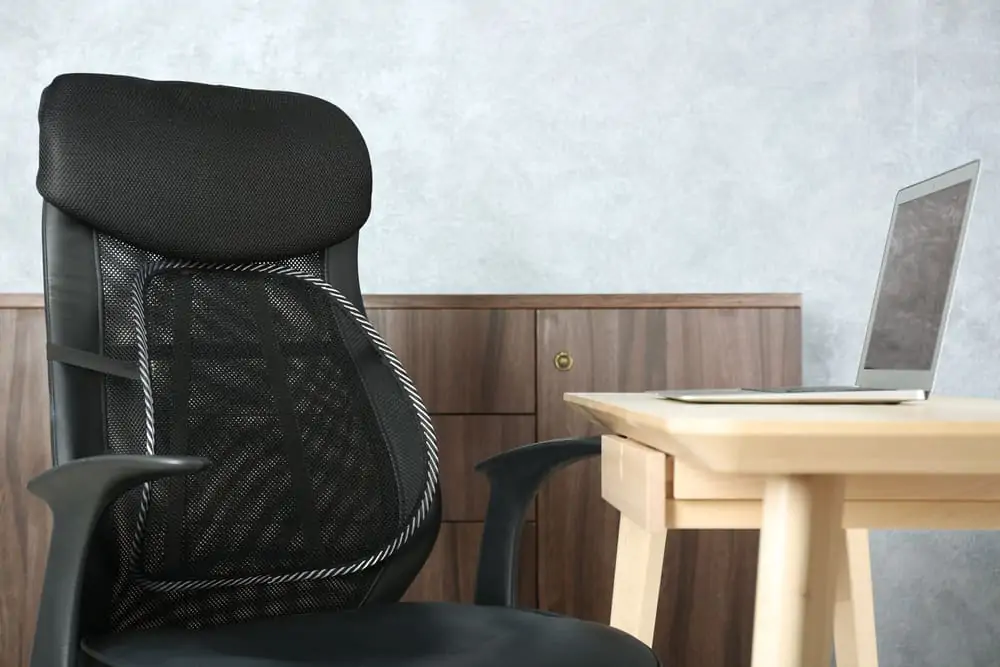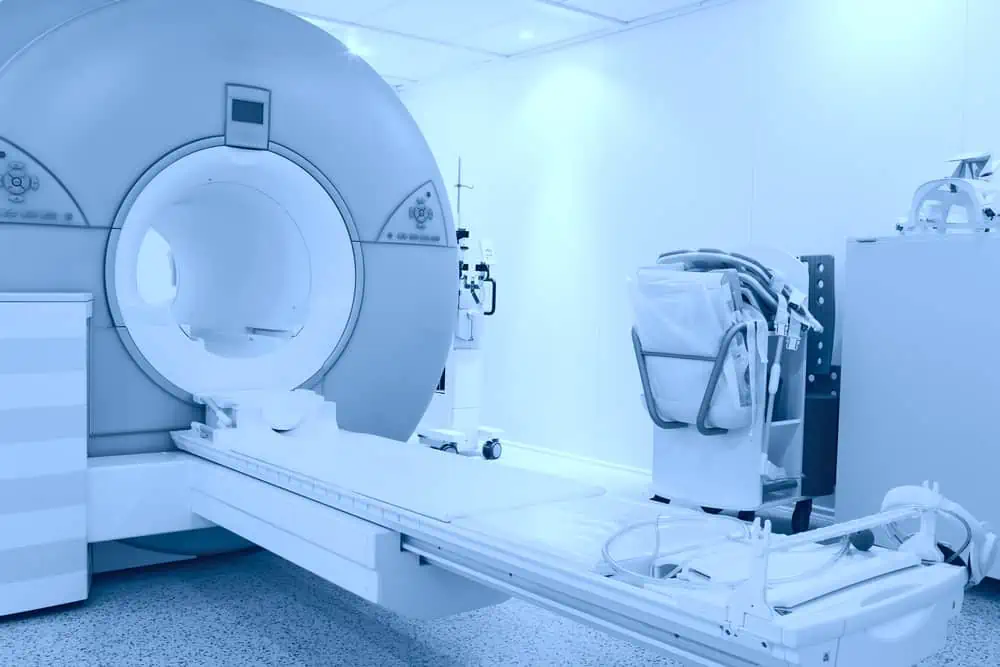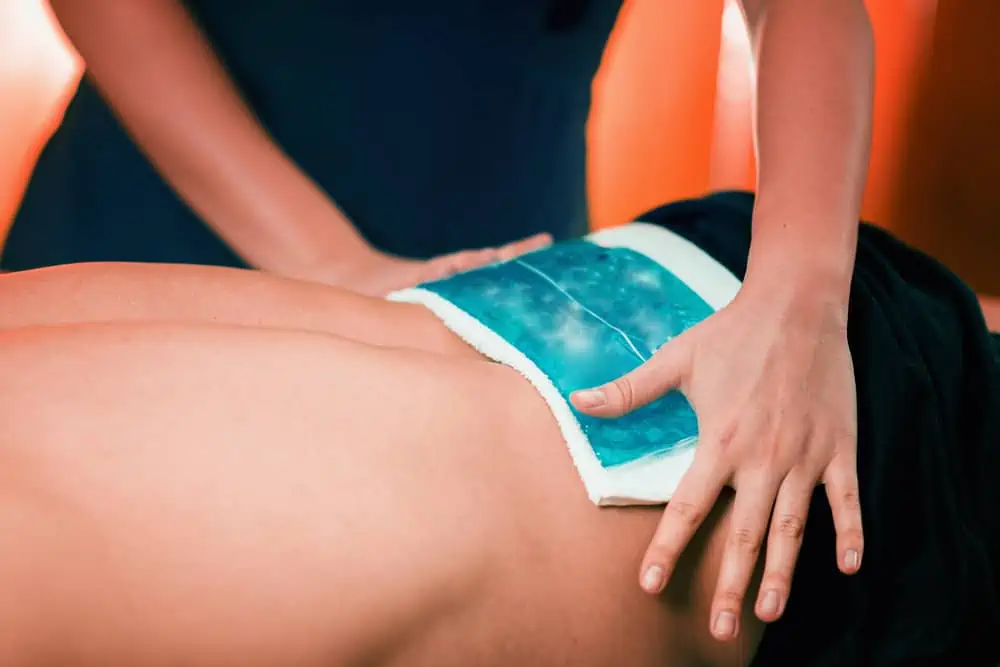This post may contain affiliate links. If you click through a link and make a purchase, I may receive a commission at no additional cost to you. As an Amazon Associate, I earn from qualifying purchases. Read the full disclosure here.
Lumbar supports are an inexpensive and low-risk prop to add to your chair without spending megabucks on a new ergonomic setup.
But where should lumbar support be placed on your chair for the most comfort? Proper lumbar support should be placed in the small of the back (lumbar spine), above the pelvis where the curve of the lower back is. For most mid-rise pants, the lumbar region is just above the belt line.
If you’re in a hurry, here are my top picks for lumbar support pillows:
- The Original McKenzie Lumbar Roll
- The Originial McKenzie D-Section Lumbar Roll
- Everlasting Comfort Lumbar Pillow
- Tempurpedic Peanut Pillow
Disclaimer: This content is for educational purposes and is not medical advice. Read the full disclaimer.
What is a lumbar support pillow?
First of all, what is a lumbar pillow, and why would you want one in the first place?
The spine has natural curves meant to be present and balanced for good alignment and distribution of forces throughout the body.
The lumbar curve is an inward curve, vs. the thoracic spine (upper back), which is more of an outward curve when looking at someone from the side.
Posture is only “bad” when you spend a lot of time in funky positions, which produces pain by straining tissues over time.
Poor posture often includes slumping down into more of a “C” shape, rounding the lower and upper back, while allowing the head to jut forward.
A lumbar pillow is a small contoured support that helps maintain the spine’s natural curves. Good lumbar support helps promote healthy spinal alignment and good posture, decreases lower back pain, and makes sitting more comfortable.
By promoting proper posture, lumbar supports also play a role in decreasing neck pain.
It’s also worth noting that “proper posture” is more of a zone or range, not a static position that one is expected to maintain.
What’s the difference between a seat cushion and a lumbar cushion?
These terms are sometimes used interchangeably. However, it’s important to note that they aren’t the same thing and how to choose between these two options for your specific needs.
A seat cushion is a support cushion that you sit on. It provides cushioning to the hips, pelvis, and coccyx area. A seat cushion may also help relieve some types of sciatic pain with sitting.
This type of cushion may provide some pain relief to the lower back, however, unless there is a lumbar pillow component, it doesn’t fully address spinal alignment.
You can use a seat cushion and lumbar pillow at the same time if it’s comfortable for you.
Check out these two super cozy options – Cushion Lab Pressure Relief Seat Cushion (which has a matching lumbar support) or the Purple Ultimate Seat Cushion with a unique pressure relieving grid system.
The seat cushion helps to cradle the pelvis and encourages good sitting posture by preventing the urge to rock backward in your chair.

Where should lumbar support be on your chair?
This is a very common question, so there’s no shame if it sounds silly. If the lumbar support cushion is in the wrong place, you won’t benefit from the pillow.
The spine has a natural set of curves. When we slump and change these curves for long periods, this can cause compression and pain.
Proper lumbar support should be placed in the small of the back (lumbar spine), above the pelvis where the curve of the lower back is. For most mid-rise pants, the lumbar region is just above the belt line.
Everyone’s anatomy is a little different, so the exact placement that’s comfortable for you may require some slight tweaks. For example, slightly higher or lower may work better for you.
Check out the video below for how to position your lumbar support.
Some pillows have an adjustable strap to keep them in place on your chair. That way, you’re not constantly readjusting the support.
Keep reading for my favorite picks for lumbar supports to help steer you in the right direction.
Do lumbar pillows help back pain?
Do lumbar support pillows actually help to reduce back pain, or are they just another gimmick?
Here are the results from two studies.
Grondin D et al. looked at lumbar curves and subjective comfort in people with low back pain using a pillow with a cut-out for pelvic tissues (basically, room for your butt so the pillow can fit your lumbar curves and actually support your back).
The study noted an improvement in reported pain and a slight improvement in spinal angles while sitting but wasn’t sure how this affected the long term.
In another study, Prommanon B et al. looked at the effect of a back care pillow on lumbar range of motion and limitations for chronic non-specific low back pain.
There were two groups, one that got physical therapy and one that got physical therapy and used a back care pillow.
The outcome for this study was that the group using the lumbar pillow in addition to PT had better results after 12 weeks.
Again, whether or not this is significant in the long term is another story, but it appears that lumbar pillows are low risk and can offer some additional pain relief, at least at the beginning of treatment.
Remember, using a pillow is a passive act, meaning it requires no effort on your part. This might sound pretty awesome, but passive treatments also don’t yield life-changing results.
Passive treatments can help in the short term but shouldn’t be relied on as the only piece of the puzzle.
Yes, lumbar pillows can help back pain, but if you have back pain, you should also be looking to add some active interventions such as stretching and strengthening specific to your condition.
How to choose the best lumbar support for you
There are a ton of choices when it comes to lumbar pillows. It’s no wonder things can get confusing. Lumbar supports come in all shapes and sizes.
One thing to consider is where you will be using the support. Your average standard chair or couch provides no additional support.
If you plan to use a support in the car, you might want to consider a slimmer design, such as the Original McKenzie Super Roll, so that the support doesn’t pitch you too far forward.
There are also different types of support, like the Original McKenzie Roll, which is just a small pillow vs. one that cradles the entire back.
Neither is better or worse. It just comes down to personal preference.
If you’re looking for a multi-purpose support pillow that can be used as a lumbar or neck support, I prefer the Tempurpedic peanut pillow. It’s small enough to take with you for travel and made of memory foam.
Here are my top picks for lumbar support pillows:
- The Original McKenzie Lumbar Roll
- The Originial McKenzie D-Section Lumbar Roll
- Everlasting Comfort Lumbar Pillow
- Tempurpedic Peanut Pillow
Ergonomic office chairs have lumbar support built into their design, but support levels vary from chair to chair.
Car seats may also have adjustable lumbar support, but this is typically only for the driver.
Should I sleep with a lumbar pillow?
There are several ways to help your spine while you sleep, but taking the lumbar pillow off your office chair doesn’t work so well.
They do make a variety of supports for sleep, but if you have a good mattress, that should take care of most of your support.
Brookstone has a unique lumbar support for sleeping, the cooling gel lumbar support pillow. This slim pillow can be placed under your back for additional support as you sleep on your back or side.
If you’re a back sleeper, you can try a wedge pillow to elevate your legs and decrease strain on the lumbar spine.
If you’re a side sleeper, you might like a body pillow.
A body pillow helps support your arms and legs, which has an overall effect on your spine by keeping a more neutral alignment. I like this option better than a knee pillow because it’s less likely to get lost in the sheets while you sleep.
Other things to consider
While a lumbar cushion can make sitting more comfortable, you will still get aches and pains if you sit too long without taking breaks.
Even the best ergonomic chair or support pillow cannot alleviate discomfort from not moving.
Humans were meant to move, and taking movement breaks from bad posture is more important for lower back pain relief than any apparatus you can find.
Passive treatments (requiring no effort on your part) don’t yield magical results (no matter what clever marketing promise).
Be sure to check out my gentle yoga practice on YouTube (linked below) that targets all the areas that get tight with prolonged sitting.
Wrapping up
A lumbar pillow can help decrease some aches and pains and improve your sitting posture.
Finding the right lumbar pillow for you may require some trial and error.
Be sure to take movement breaks throughout the day and include the appropriate stretching and strengthening exercises for you for optimal results.
References
Grondin DE, Triano JJ, Tran S, Soave D. The effect of a lumbar support pillow on lumbar posture and comfort during a prolonged seated task. Chiropr Man Therap. 2013;21(1):21. Published 2013 Jul 4. doi:10.1186/2045-709X-21-21
Prommanon B, Puntumetakul R, Puengsuwan P, et al. Effectiveness of a back care pillow as an adjuvant physical therapy for chronic non-specific low back pain treatment: a randomized controlled trial. J Phys Ther Sci. 2015;27(7):2035-2038. doi:10.1589/jpts.27.2035







